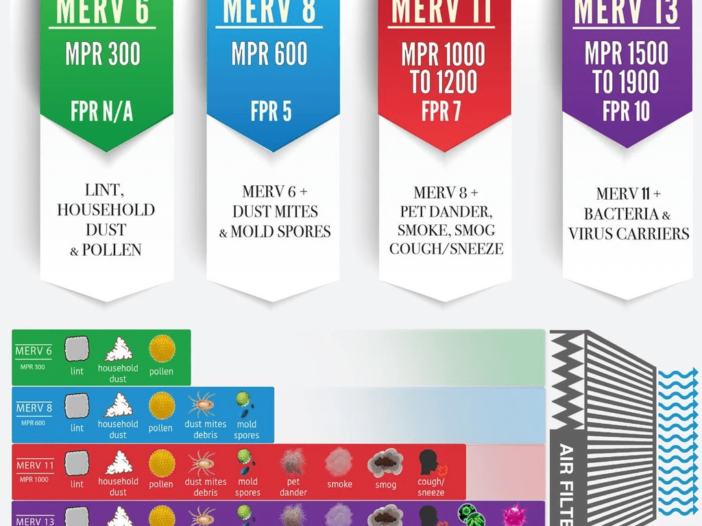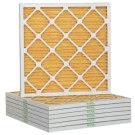
A MERV rating tells you, on a scale of 1-16, how effectively your filter traps the small particles you don’t want circulating through your home. The higher a MERV rating, the higher the amount of particles the filter traps.
The American Society of Heating, Refrigerating and Air-Conditioning Engineers (ASHRAE) established the ratings system in 1987. Each filter’s rating represents its lowest possible performance, meaning every MERV rating answers the question, “worst case scenario, how many particles will this filter trap?”
MERV 8
MERV 8 pleated filters are made with synthetic media. They catch small particles and allergens, between 3-10 microns in size. They are a decent upgrade from cheaper disposable products.
MERV 11
MERV 11 pleated filters are also made with synthetic media and are step up from Merv 8, without a significant price increase. A very good upgrade, providing good indoor air quality.
MERV 13
MERV 13 pleated filters are also constructed with synthetic media. Excellent filtration however, not suitable for most hvac systems due to air flow resistance. Check with your furnace manufacturer to ensure that your system is designed for this type of filter.
What Merv Rating Should My Filter Have?
The answer to this question will vary based on your HVAC system, but generally aiming for a MERV rating between 8 and 13 is ideal for the typical home. Remember, you should make sure your filter and your system work in harmony. Filters with high MERV ratings may remove more harmful contaminates from your home, but they may actually reduce the quality of the air you breath if you select a filter with a MERV rating that’s too high for your HVAC system.
For more Info about MERV rating visit https://www.pkwadsworth.com/air-quality/ or to schedule an appointment, contact our experts at P.K. Wadsworth Heating & Cooling. We’ve been the greater Cleveland area’s trusted source for quality HVAC service and repair since 1936.









